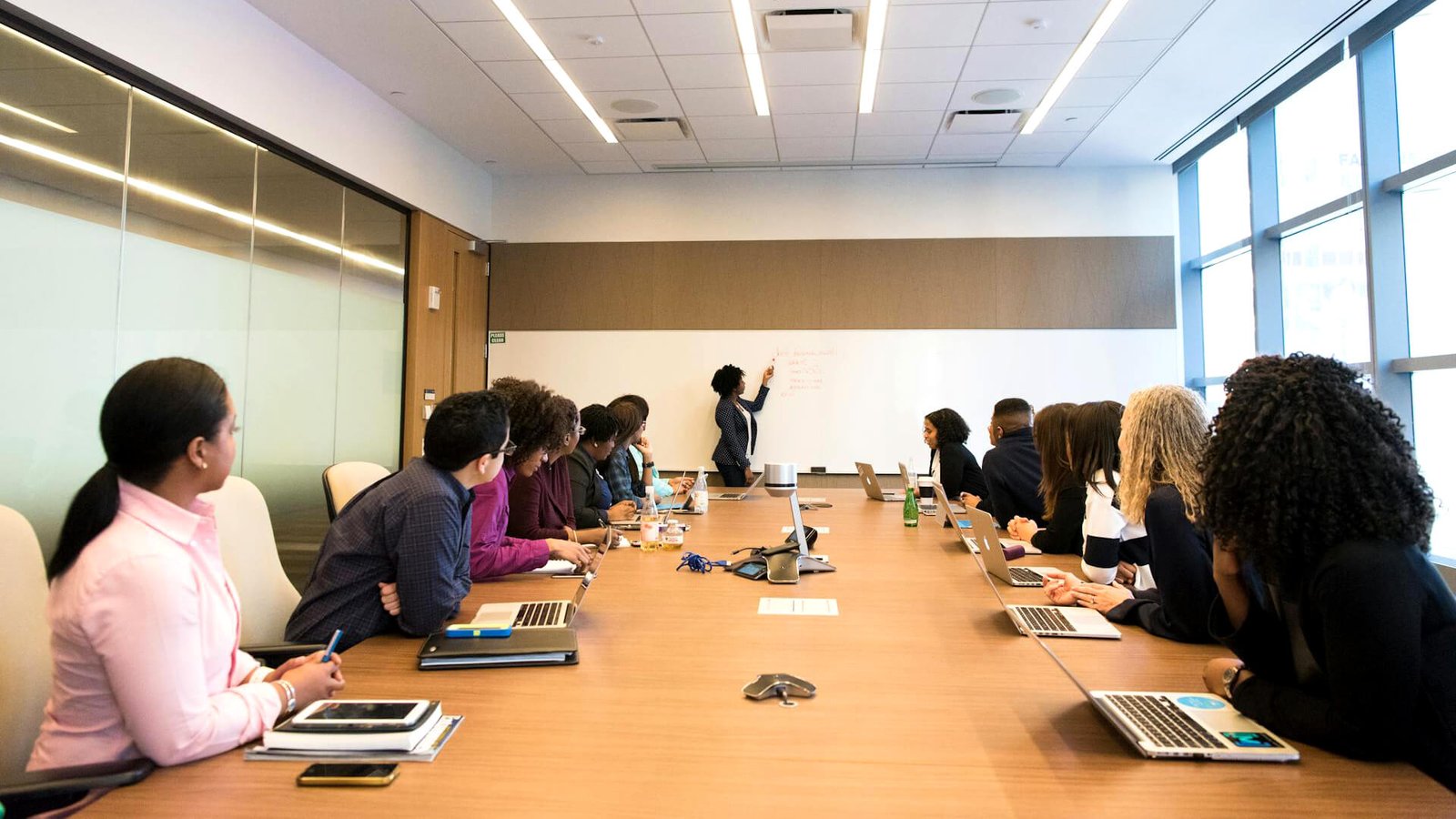
Navigating Cultural Transformation Challenges in Organizations
Imagine a multinational technology firm, GlobalTech, undergoing a significant cultural transformation initiative aimed at fostering innovation and agility in response to market shifts.
As the organization embarks on this journey, it encounters several challenges that highlight the complexities of cultural change in large corporations:
1. Resistance from Long-Term Employees
Many long-term employees at GlobalTech have grown accustomed to traditional hierarchical structures and processes. They perceive the proposed cultural shift towards flatter hierarchies and cross-functional collaboration as a threat to their established roles and authority.
This resistance poses a significant hurdle to embracing new ways of working and adapting to change.
2. Cultural Alignment Across Geographies
GlobalTech operates in multiple countries, each with its own cultural norms, values, and work styles. The headquarters in Silicon Valley promotes a culture of fast-paced innovation and risk-taking, while regional offices in Asia and Europe prioritize stability and consensus-driven decision-making.
Aligning these diverse cultural perspectives to a unified organizational culture proves challenging, requiring nuanced strategies that respect local customs while advancing global objectives.
3. Communication Breakdowns
Effective communication is essential for driving cultural transformation. However, at GlobalTech, the influx of new communication tools and platforms intended to enhance transparency and collaboration inadvertently leads to information overload and confusion among employees.
Clear communication channels that resonate across all levels of the organization become paramount but are difficult to establish amidst the cultural shift.
4. Leadership Alignment and Role Modeling
The executive team at GlobalTech champions the cultural transformation initiative but struggles to consistently model the desired behaviors and values.
Middle managers, tasked with implementing change at the operational level, perceive a lack of commitment and alignment from senior leadership, resulting in mixed messages and hesitancy among teams to fully embrace the new cultural norms.
5. Overcoming Legacy Systems and Processes
GlobalTech’s legacy systems and bureaucratic processes, designed to maintain stability and control, inhibit the organization’s ability to adapt quickly to market demands.
Despite efforts to streamline workflows and empower teams, the inertia of outdated practices slows down progress and frustrates employees eager for change.
6. Measuring Cultural Impact
Quantifying the impact of cultural transformation initiatives proves elusive for GlobalTech. Traditional metrics like employee satisfaction surveys and turnover rates provide limited insights into the deeper cultural shifts occurring within the organization.
Finding meaningful metrics that capture behavioral changes, innovation outcomes, and customer-centricity becomes a priority but requires innovative approaches and investment in new measurement tools.
7. Employee Morale and Engagement
As GlobalTech implements cultural changes, employee morale and engagement fluctuate. While some employees eagerly embrace the new culture of openness and collaboration, others feel uncertain and disengaged.
The lack of clarity on how their roles and contributions fit into the transformed organization leads to frustration and decreased productivity.
8. Cultural Clash in Mergers and Acquisitions
GlobalTech recently acquired a smaller tech startup known for its entrepreneurial spirit and unconventional work culture. Integrating this startup’s workforce into GlobalTech’s established culture poses a challenge.
The clash between the startup’s informal, risk-taking culture and GlobalTech’s more structured, risk-averse approach creates tension and resistance among employees from both entities.
9. Training and Development Needs
Addressing the training and development needs of employees during cultural transformation proves crucial yet challenging for GlobalTech. Employees require new skills and competencies to thrive in the evolving organizational culture, such as cross-functional collaboration, adaptive leadership, and digital fluency.
Designing and implementing effective training programs that resonate with diverse employee backgrounds and learning preferences becomes a priority.
10. Managing Diversity and Inclusion
GlobalTech places a strong emphasis on diversity and inclusion (D&I) as part of its cultural transformation efforts. However, achieving meaningful D&I requires more than just hiring diverse talent. It involves creating an inclusive environment where all employees feel valued, respected, and empowered to contribute their unique perspectives.
Overcoming unconscious biases, fostering cultural sensitivity, and promoting equitable opportunities for career advancement are ongoing challenges.
11. Sustainability of Cultural Change
Despite initial enthusiasm and efforts, sustaining cultural change over the long term remains a formidable challenge for GlobalTech.
As organizational priorities and external market conditions evolve, maintaining momentum and embedding cultural norms deeply into the fabric of the organization requires continuous reinforcement, leadership commitment, and adaptation to new challenges and opportunities.
Navigating the Challenges: Solution
Navigating these challenges requires a comprehensive approach that includes assessing current cultural landscapes, setting clear vision and values, fostering inclusive practices, and continuously monitoring progress.
By addressing these challenges proactively, organizations like GlobalTech can successfully navigate cultural transformation, foster a culture of innovation, resilience, and inclusivity, and position themselves for long-term success in today’s competitive business environment.
Resistance and Adaptation
Addressing resistance involves several strategic approaches. GlobalTech can start by fostering open communication channels to ensure that employees understand the reasons behind the cultural changes.
Leaders should articulate the vision clearly and engage employees in dialogues to address concerns and gather feedback. Implementing change management strategies, such as involving influential employees as change champions, can help in overcoming resistance.
Additionally, creating a culture of continuous learning and adaptation where feedback is valued and acted upon can help in gradually shifting mindsets and behaviors towards embracing the new culture.
Diversity and Integration
Managing diversity requires proactive efforts from GlobalTech. They can start by establishing inclusive practices that celebrate diverse perspectives and backgrounds. This includes creating affinity groups or employee resource groups where employees can share their cultural experiences and collaborate on initiatives that promote inclusion.
Training programs on cultural competence and sensitivity can also be implemented to increase awareness and reduce biases. GlobalTech should actively promote cross-cultural collaboration and communication to integrate diverse teams effectively, ensuring that all employees feel valued and respected.
Communication and Clarity
Effective communication is critical during cultural transformation. GlobalTech should develop a comprehensive communication plan that outlines the objectives, benefits, and expectations of the cultural changes.
This plan should use multiple communication channels, such as town hall meetings, newsletters, intranet updates, and regular team meetings, to reach all employees. Leaders should consistently communicate the vision, progress, and milestones of the transformation journey, while also encouraging two-way communication to address employee concerns and gather insights.
Transparent communication builds trust and alignment, ensuring that everyone understands their role in the cultural transformation.
Leadership Commitment
Leadership commitment sets the tone for cultural transformation. GlobalTech’s leaders should demonstrate visible support and engagement in the change process. This includes actively participating in cultural initiatives, leading by example in embracing new cultural norms, and reinforcing the importance of cultural values through their actions and decisions.
Leadership should also invest in leadership development programs that emphasize adaptive leadership skills, enabling them to navigate complexity and ambiguity during the transformation.
By embodying the desired cultural traits and behaviors, leaders inspire confidence and commitment among employees, driving sustainable cultural change.
Training and Development
Meeting the evolving skill needs of employees requires targeted training and development programs. GlobalTech should conduct a comprehensive skills gap analysis to identify areas where employees require additional training related to the new cultural norms and organizational goals.
Tailored training programs should be developed to enhance skills such as cross-functional collaboration, communication, adaptability, and resilience. These programs should be interactive, engaging, and accessible to all employees, using a blend of in-person workshops, online modules, mentoring, and peer learning opportunities.
Continuous evaluation and feedback mechanisms should be implemented to ensure the effectiveness of training initiatives and to make necessary adjustments.
Sustainability
Sustaining cultural change requires ongoing effort and commitment. GlobalTech should embed cultural values into all aspects of the organization, including performance management, recognition programs, and decision-making processes. Leaders should continuously reinforce cultural norms through consistent communication, policies, and practices.
Regular assessments and reviews of cultural alignment should be conducted to monitor progress and identify areas for improvement. Creating a culture of accountability where employees are empowered to uphold cultural values and hold each other accountable also contributes to sustainability.
By integrating cultural change into the organization’s DNA, GlobalTech can ensure that the transformation endures over time.
Diversity and Integration
Managing diversity requires proactive efforts from GlobalTech. They can start by establishing inclusive practices that celebrate diverse perspectives and backgrounds. This includes creating affinity groups or employee resource groups where employees can share their cultural experiences and collaborate on initiatives that promote inclusion.
Training programs on cultural competence and sensitivity can also be implemented to increase awareness and reduce biases. GlobalTech should actively promote cross-cultural collaboration and communication to integrate diverse teams effectively, ensuring that all employees feel valued and respected.
Communication and Clarity
Effective communication is critical during cultural transformation. GlobalTech should develop a comprehensive communication plan that outlines the objectives, benefits, and expectations of the cultural changes.
This plan should use multiple communication channels, such as town hall meetings, newsletters, intranet updates, and regular team meetings, to reach all employees. Leaders should consistently communicate the vision, progress, and milestones of the transformation journey, while also encouraging two-way communication to address employee concerns and gather insights.
Transparent communication builds trust and alignment, ensuring that everyone understands their role in the cultural transformation.
Leadership Commitment
Leadership commitment sets the tone for cultural transformation. GlobalTech’s leaders should demonstrate visible support and engagement in the change process. This includes actively participating in cultural initiatives, leading by example in embracing new cultural norms, and reinforcing the importance of cultural values through their actions and decisions.
Leadership should also invest in leadership development programs that emphasize adaptive leadership skills, enabling them to navigate complexity and ambiguity during the transformation.
By embodying the desired cultural traits and behaviors, leaders inspire confidence and commitment among employees, driving sustainable cultural change.
Training and Development
Meeting the evolving skill needs of employees requires targeted training and development programs. GlobalTech should conduct a comprehensive skills gap analysis to identify areas where employees require additional training related to the new cultural norms and organizational goals.
Tailored training programs should be developed to enhance skills such as cross-functional collaboration, communication, adaptability, and resilience. These programs should be interactive, engaging, and accessible to all employees, using a blend of in-person workshops, online modules, mentoring, and peer learning opportunities. Continuous evaluation and feedback mechanisms should be implemented to ensure the effectiveness of training initiatives and to make necessary adjustments.
Training and development are crucial for equipping employees with the competencies needed to thrive in a culturally transformed environment. By identifying specific skill gaps and providing targeted training interventions, GlobalTech can empower employees to adapt to new cultural norms, collaborate effectively across diverse teams, and contribute positively to the organization’s goals.
Sustainability
Sustaining cultural change requires ongoing effort and commitment. GlobalTech should embed cultural values into all aspects of the organization, including performance management, recognition programs, and decision-making processes.
Leaders should continuously reinforce cultural norms through consistent communication, policies, and practices. Regular assessments and reviews of cultural alignment should be conducted to monitor progress and identify areas for improvement.
Creating a culture of accountability where employees are empowered to uphold cultural values and hold each other accountable also contributes to sustainability. By integrating cultural change into the organization’s DNA, GlobalTech can ensure that the transformation endures over time.
Sustainability is key to ensuring that cultural transformation efforts yield long-term benefits. GlobalTech should focus on embedding cultural values into daily operations and practices, fostering a work environment where cultural alignment is prioritized and reinforced.
By fostering a culture of accountability and regularly evaluating cultural alignment, GlobalTech can maintain momentum and adapt to evolving business challenges while staying true to its cultural aspirations.
Summary
Cultural transformation at GlobalTech presents a series of challenges that require strategic solutions and proactive management. The journey begins with leadership commitment and clear communication, setting the foundation for fostering diversity, inclusivity, and collaboration within the organization.
Addressing financial constraints, cultural barriers, and resistance to change involves implementing inclusive practices, leveraging technology for communication, and fostering a culture of transparency and accountability.
Empowering employees through training and development initiatives equips them with the skills needed to thrive in a culturally transformed environment.
Sustainable cultural change is achieved through embedding cultural values into daily operations, fostering a culture of continuous improvement, and ensuring alignment across all levels of the organization.
By embracing these strategies, GlobalTech can navigate cultural transformation challenges effectively, driving innovation, employee satisfaction, and organizational success in a globalized market.
These efforts contribute to building a resilient organization capable of adapting to change and driving sustained success in a dynamic business landscape.



